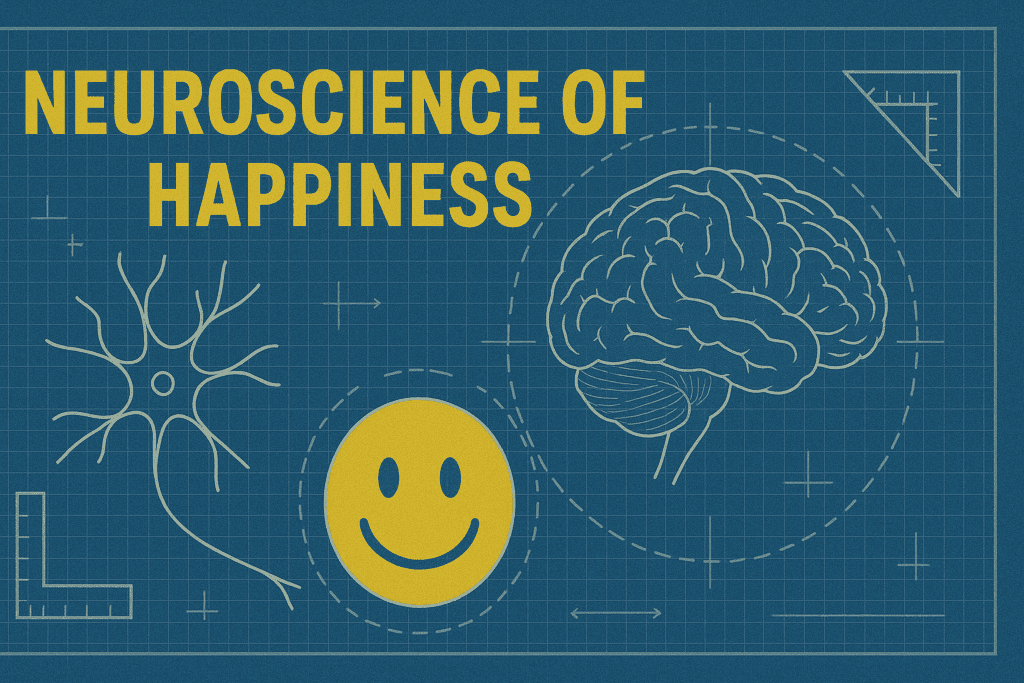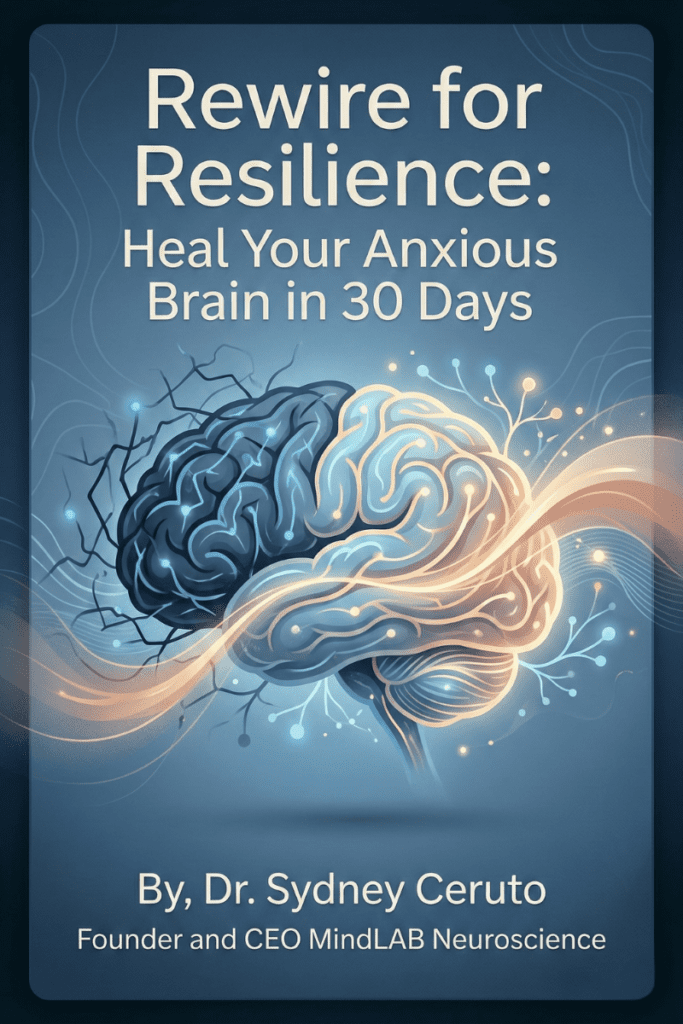🎧 Audio Version
The Brain’s Blueprint for Well-Being
The neuroscience of happiness represents one of the most compelling frontiers in understanding human flourishing. Rather than viewing happiness as an elusive emotional state that randomly visits us, modern neuroscience reveals it as a complex biological phenomenon rooted in specific brain structures, chemical messengers, and neural pathways. This scientific understanding empowers us to actively shape our capacity for joy and contentment through targeted practices that rewire our brains for greater well-being.
The human brain contains approximately 86 billion neurons, each forming thousands of connections that create intricate networks responsible for every aspect of our experience. Within this vast neural architecture, specific regions and circuits specialize in processing positive emotions, reward, motivation, and satisfaction. The neuroscience of happiness demonstrates that these systems are not fixed but remarkably plastic, capable of strengthening and expanding throughout our lives. This neuroplasticity means that happiness is not merely something that happens to us but something we can actively cultivate by understanding and engaging the brain’s natural mechanisms for well-being.
Research using functional magnetic resonance imaging and positron emission tomography has identified specific brain regions that consistently activate during experiences of joy and contentment. The prefrontal cortex, particularly its left hemisphere, exhibits heightened activity in individuals who report greater happiness. This region serves as the brain’s executive center, orchestrating complex decision-making, emotional regulation, and goal-directed behavior. When we experience positive emotions, increased activation in the left prefrontal cortex reflects approach motivation and engagement with rewarding experiences. Understanding the neuroscience of happiness reveals that this asymmetry between left and right prefrontal activity serves as a neural signature of well-being, with happier individuals demonstrating consistently greater left-sided activation.

Chemical Messengers of Joy
The neuroscience of happiness fundamentally depends on neurotransmitters, the chemical messengers that enable communication between neurons. Four primary neurotransmitters form the foundation of our happiness chemistry: dopamine, serotonin, oxytocin, and endorphins. Each plays a distinct role in creating the multifaceted experience we recognize as happiness, and understanding their functions provides insight into how we can naturally enhance our well-being.
Dopamine drives the brain’s reward system, creating feelings of pleasure, motivation, and anticipation. When we accomplish a goal, enjoy a delicious meal, or engage in activities we find rewarding, dopamine neurons in the ventral tegmental area release this neurotransmitter into the nucleus accumbens, a region central to experiencing pleasure and reinforcement. The neuroscience of happiness reveals that dopamine not only creates pleasure in the moment but also motivates us to seek out rewarding experiences, establishing a positive feedback loop that propels us toward meaningful goals. This neurotransmitter operates as both a reward signal and a motivational driver, explaining why pursuing challenging yet achievable objectives contributes significantly to sustained happiness.
Serotonin functions as a mood stabilizer, regulating overall emotional balance and contributing to feelings of contentment and calm. Unlike dopamine’s role in immediate pleasure and motivation, serotonin creates a more sustained sense of well-being. Approximately 90 percent of the body’s serotonin is located in the gut, highlighting the intricate connection between digestive health and emotional well-being. The neuroscience of happiness reveals that adequate serotonin levels reduce anxiety, promote better sleep, and support cognitive functions, including memory and learning. Activities that increase serotonin naturally include exposure to bright light, physical exercise, and social connection.
Oxytocin, often referred to as the bonding hormone, facilitates social connection, trust, and interpersonal warmth. Released during positive social interactions, physical touch, and moments of intimacy, oxytocin strengthens the neural circuits associated with attachment and belonging. The neuroscience of happiness reveals that our social bonds have a profound influence on our brain chemistry, with strong relationships literally altering our neurobiological state to promote greater well-being. This neurotransmitter also reduces activity in the amygdala, the brain’s fear center, helping us feel safer and more open in social contexts.
Endorphins serve as the body’s natural pain relievers and mood elevators. Released during physical exercise, laughter, and other pleasurable activities, these opioid peptides create feelings of euphoria while reducing discomfort and stress. The runner’s high phenomenon exemplifies endorphin action, demonstrating how physical activity triggers neurochemical changes that enhance mood. Understanding the neuroscience of happiness reveals that we possess innate mechanisms for generating positive emotional states through behavioral choices that stimulate these potent molecules.
The Architecture of Positive Emotion
Several interconnected brain regions form the neural architecture underlying happiness. The nucleus accumbens, located in the ventral striatum, serves as a central hub in the brain’s reward circuitry. This structure processes rewarding stimuli and reinforces behaviors that lead to positive outcomes. When the neuroscience of happiness examines pleasure and satisfaction, the nucleus accumbens consistently emerges as a critical player, integrating signals from multiple brain regions to create the subjective experience of reward.
The orbitofrontal cortex, situated in the prefrontal region, specializes in evaluating the hedonic value of experiences. This area codes for pleasantness across different types of rewards, from sensory pleasures like food and music to more complex satisfactions such as aesthetic appreciation and interpersonal connection. Research in the neuroscience of happiness shows that activity in a specific subregion of the orbitofrontal cortex correlates strongly with subjective ratings of pleasure, suggesting this area may represent a cortical hub for conscious enjoyment.
The amygdala, traditionally associated with fear and negative emotions, also plays a crucial role in processing positive experiences. Happy individuals demonstrate greater amygdala responsivity to positive stimuli without showing decreased sensitivity to negative information. This balanced reactivity suggests that the neuroscience of happiness involves not emotional blindness to difficulties, but rather an enhanced capacity to recognize and engage with the positive aspects of experience. The amygdala’s connections with the hippocampus integrate emotional experiences with memory, allowing positive moments to shape our ongoing sense of well-being.
The anterior cingulate cortex plays a crucial role in contributing to happiness through its involvement in emotional regulation, empathy, and attention. This region helps monitor conflict between different response options and supports adaptive decision-making. When examining the neuroscience of happiness, researchers find that mindfulness practices strengthen the anterior cingulate cortex, thereby enhancing our ability to regulate emotions and maintain equanimity during challenging situations.
The insula processes interoceptive awareness, enabling us to perceive internal bodily states and integrate these sensations with emotional experiences. This awareness of our physical condition contributes to overall well-being by allowing more accurate perception of our needs and more effective self-regulation. The neuroscience of happiness reveals that enhanced insula function is correlated with greater emotional intelligence and an improved capacity for self-awareness.

Rewiring Your Brain for Lasting Joy
Perhaps the most empowering insight from the neuroscience of happiness is the discovery of neuroplasticity, the brain’s ability to reorganize itself by forming new neural connections throughout life. This adaptability means that happiness is not determined solely by genetics or circumstances but can be actively cultivated through intentional practices that reshape brain structure and function. Studies demonstrate that consistent engagement in specific activities literally changes the brain, increasing gray matter density in regions associated with positive emotions and strengthening connections between areas involved in well-being.
Gratitude practices exemplify how behavioral interventions leverage neuroplasticity to enhance happiness. When we regularly acknowledge and appreciate positive aspects of our lives, we activate the medial prefrontal cortex, a region involved in value judgments and self-referential processing. This activation releases dopamine and serotonin, creating immediate feelings of pleasure and contentment. More importantly, the neuroscience of happiness shows that sustained gratitude practice strengthens neural pathways associated with positive thinking, making it progressively easier to notice and appreciate good things in our environment. Over time, gratitude rewires the brain, shifting default thought patterns from negative rumination toward constructive appreciation.
Research demonstrates that participants who maintained gratitude journals for several months showed increased gray matter in the prefrontal cortex and enhanced activity in reward processing centers, including the nucleus accumbens. These structural and functional changes persisted beyond the intervention period, suggesting that gratitude creates lasting modifications in brain architecture. The neuroscience of happiness indicates that this rewiring occurs through repeated activation of positive emotion circuits, which strengthens synaptic connections according to the principle that neurons that fire together wire together.
Mindfulness meditation represents another powerful tool for reshaping brain structure and function toward greater well-being. Systematic practice of mindfulness alters multiple brain regions involved in attention, emotional regulation, and self-awareness. Studies examining the neuroscience of happiness through brain imaging reveal that mindfulness meditation increases thickness in the prefrontal cortex, enhances connectivity between the prefrontal cortex and amygdala, and reduces amygdala volume. These changes result in improved emotional regulation, reduced reactivity to stress, and an enhanced capacity for sustained positive mood.
The prefrontal-amygdala connection proves particularly significant for happiness. The amygdala generates rapid emotional responses, particularly to threatening stimuli. At the same time, the prefrontal cortex provides top-down regulation that modulates these reactions. Strengthening the connections between these regions through mindfulness allows us to respond more thoughtfully to challenging situations rather than reacting automatically. The neuroscience of happiness reveals that this enhanced regulation does not suppress emotions, but rather enables more flexible and adaptive responses that promote well-being.
Eight weeks of mindfulness training result in measurable changes in brain structure, including increased gray matter concentration in the hippocampus and the posterior cingulate cortex. These changes correlate with improvements in self-reported well-being and reductions in stress. Even brief periods of meditation alter brain activity patterns, shifting from high-frequency beta waves associated with active thinking and stress toward slower alpha and theta waves linked to relaxation and focused attention. Understanding the neuroscience of happiness reveals that these practices work not through mystical means but through concrete biological mechanisms that we can consciously engage.

The Social Brain and Connection
Human brains evolved to be fundamentally social, with extensive neural networks dedicated to processing social information, understanding others’ mental states, and forming meaningful relationships. The neuroscience of happiness reveals that social connection is among the most potent determinants of well-being, with strong relationships offering both immediate emotional benefits and long-term health advantages. Loneliness, conversely, activates stress responses in the brain that are similar to those triggered by physical pain, highlighting how deeply our neural architecture depends on social bonds.
When we experience positive social interactions, multiple brain systems activate in concert. The ventral striatum, including the nucleus accumbens, responds to social rewards in a manner similar to that of other pleasurable stimuli, releasing dopamine and evoking feelings of satisfaction. Oxytocin released during bonding experiences strengthens connections between the prefrontal cortex and limbic regions, facilitating trust and emotional resonance with others. The neuroscience of happiness shows that these neurochemical changes literally alter our brain state, making us feel safer, more open, and more capable of emotional intimacy.
Research examining individuals who feel lonely reveals distinct patterns of altered brain function. The default mode network, which is active during rest and self-referential thinking, exhibits increased connectivity in socially isolated individuals, suggesting that they spend more time ruminating about themselves rather than engaging with the external world. This heightened internal focus correlates with decreased well-being. Additionally, individuals who are lonely demonstrate reduced ventral striatum activation when viewing pleasant social stimuli, indicating diminished reward processing for social experiences. The neuroscience of happiness suggests that chronic loneliness creates a negative feedback loop, where reduced social reward makes social engagement feel less appealing, thereby perpetuating isolation.
Conversely, strong social bonds protect against stress and promote resilience. During functional brain imaging studies, participants experiencing mild stress while holding hands with a romantic partner showed reduced activation in brain regions associated with threat processing. Physical connection with trusted others literally changed their neural response to adversity. Understanding the neuroscience of happiness reveals that relationships operate not merely at the psychological level, but also fundamentally alter our brain chemistry and reactivity, making life’s challenges more manageable.
The Happiness Set Point and Adaptation
The neuroscience of happiness encompasses understanding both our remarkable capacity for adaptation and the existence of genetically influenced baseline levels of happiness. Twin studies reveal that genetic factors account for approximately 40 percent of individual differences in happiness, with environmental factors and intentional activities contributing the remaining 60 percent. This genetic component, sometimes referred to as the happiness set point, reflects inherited differences in brain structure, neurotransmitter function, and stress reactivity that predispose some individuals to greater baseline contentment.
However, the concept of a fixed set point has evolved with advancing research. The neuroscience of happiness now recognizes that genetic influences interact dynamically with environmental conditions, and that the expression of happiness-related genes can change in response to life circumstances. Neuroplasticity means that even genetically influenced brain patterns can shift through sustained engagement with practices that promote well-being. While we may have predispositions toward certain happiness levels, these tendencies are not destiny but rather starting points that we can modify through understanding and leveraging neural mechanisms.
Hedonic adaptation presents both a challenge and a protective mechanism for happiness. This phenomenon describes how we quickly return to baseline emotional states after both positive and adverse events. The neuroscience of happiness explains this adaptation through changes in neural responsivity: repeated exposure to any stimulus, even pleasurable ones, gradually reduces the intensity of neural response it produces. This adaptation protects us from being overwhelmed by constant stimulation, allowing us to maintain relatively stable functioning despite life’s ups and downs.
The hedonic treadmill phenomenon demonstrates how pursuing external achievements and acquisitions often fails to produce lasting happiness increases. While purchasing a new car or receiving a promotion initially activates reward circuits and creates pleasure, adaptation ensures these feelings fade as we adjust to new circumstances. Understanding the neuroscience of happiness reveals why sustainable well-being comes not from accumulating external rewards but from engaging in activities that provide ongoing challenge, meaning, and growth—experiences less subject to complete adaptation.
Two distinct forms of happiness, hedonic and eudaimonic, involve partially different neural substrates. Hedonic happiness, derived from pleasure and comfort, activates reward circuits including the ventral striatum and orbitofrontal cortex. Eudaimonic happiness, arising from meaning, purpose, and personal growth, engages additional regions, including the anterior cingulate cortex and areas involved in self-transcendence and goal pursuit. The neuroscience of happiness suggests that lasting well-being arises from striking a balance between two types of happiness: enjoying sensory pleasures while also pursuing meaningful objectives that align with our values and contribute to something greater than ourselves.
Flow States and Optimal Experience
The neuroscience of happiness encompasses understanding the concept of flow, a mental state characterized by complete absorption in an activity where action and awareness merge. Psychologist Mihaly Csikszentmihalyi identified this optimal experience as central to happiness, characterized by focused attention, intrinsic motivation, a loss of self-consciousness, and an altered perception of time. During flow, the brain enters a unique state where multiple systems operate in synchronized harmony, creating both peak performance and deep enjoyment.
Neuroimaging research reveals that flow involves a pattern known as transient hypofrontality, where specific prefrontal regions exhibit reduced activity. This decrease in areas related to self-referential thinking and temporal awareness explains the loss of self-consciousness and time distortion characteristic of the flow state. Simultaneously, regions involved in focused attention and motor coordination show heightened activation. The neuroscience of happiness demonstrates that this neural configuration allows complete engagement with the task at hand, free from distracting self-evaluation or temporal concerns.
Flow states occur when challenge and skill reach optimal balance. A lack of challenge relative to skill produces boredom, while excessive challenge creates anxiety. The neuroscience of happiness shows that this balance point activates dopaminergic reward pathways while maintaining moderate arousal levels—enough to sustain engagement without triggering stress responses. This neurochemical state promotes both immediate enjoyment and intrinsic motivation to continue the activity.
Studies of musicians and athletes in flow states reveal a reduction in heart rate and facial muscle tension, despite high-level performance, suggesting a state of effortless attention. Brain activity during flow exhibits patterns similar to those observed during meditation, characterized by coherence between different brain regions and a shift toward slower, more synchronized brain waves. Understanding the neuroscience of happiness reveals that cultivating flow through activities that challenge us appropriately and engage our interests provides a powerful pathway to both immediate joy and long-term fulfillment.

Sleep, Recovery, and Emotional Balance
The neuroscience of happiness recognizes sleep as fundamental to emotional well-being, with sleep quality showing stronger associations with happiness than many other lifestyle factors. During sleep, the brain undergoes critical processes including memory consolidation, emotional regulation, neurotransmitter rebalancing, and clearance of metabolic waste products. Insufficient or poor-quality sleep disrupts these restorative functions, leading to impaired emotional regulation, increased negative affect, and reduced capacity to experience positive emotions.
Sleep deprivation particularly affects the prefrontal cortex, impairing its capacity to regulate the amygdala and other limbic structures involved in emotional reactivity. Following sleep loss, the amygdala exhibits heightened responses to harmful stimuli. In contrast, connections between the amygdala and the prefrontal cortex weaken. The neuroscience of happiness reveals that this neural pattern leads to emotional instability, where minor irritations trigger disproportionate reactions and positive experiences fail to have their usual impact on mood.
Quality sleep supports the balance of serotonin and dopamine, maintaining the neurochemical foundation for a positive mood. The relationship operates bidirectionally: while poor sleep reduces these neurotransmitters and compromises happiness, chronic stress and unhappiness impair sleep quality by maintaining elevated cortisol and norepinephrine that interfere with standard sleep architecture. Understanding the neuroscience of happiness reveals that addressing sleep represents one of the most effective interventions for improving well-being, as better sleep enhances emotional resilience while positive emotional states promote more restorative sleep.
Research consistently links higher sleep quality with greater life satisfaction, more frequent positive emotions, and increased resilience to stress. Students who improve their sleep quality show corresponding increases in happiness and self-esteem within weeks. The neuroscience of happiness suggests that prioritizing consistent, sufficient, and high-quality sleep provides a solid foundation upon which other happiness-promoting practices can build more effectively.
Practical Pathways to Neural Transformation
Translating the neuroscience of happiness into actionable strategies empowers us to actively enhance our well-being through evidence-based practices. Physical exercise stands among the most powerful interventions, triggering multiple beneficial neurochemical changes. Aerobic activity increases production of brain-derived neurotrophic factor, a protein that supports neuron growth and survival, particularly in the hippocampus. Exercise also stimulates the release of dopamine, activates the endorphin system, and enhances serotonin synthesis. These combined effects explain why regular physical activity produces both immediate mood elevation and long-term reductions in depression and anxiety.
Even modest amounts of movement provide happiness benefits. Brief periods of physical activity throughout the day boost positive mood regardless of baseline happiness levels. The neuroscience of happiness reveals that we need not train for marathons to experience neurochemical benefits—simple activities like walking, dancing, or gardening engage reward systems and promote well-being when practiced consistently.
Building meaningful relationships and investing in social connections leverages our brain’s inherent social architecture. Quality interactions release oxytocin, activate reward circuits, and buffer against stress by reducing cortisol and inflammatory markers. The neuroscience of happiness reveals that prioritizing time with loved ones, cultivating empathy, and contributing to the community creates neurobiological changes that enhance both immediate happiness and long-term well-being.
Engaging in activities that promote flow provides opportunities for optimal experience and sustained well-being. Identifying pursuits that challenge our skills appropriately and capture our interest allows regular entry into flow states where engagement and enjoyment naturally emerge. The neuroscience of happiness suggests that allocating time for activities such as creative endeavors, sports, or skilled hobbies contributes significantly to life satisfaction by providing recurring experiences of absorption and mastery.
Developing a consistent gratitude practice helps rewire attentional systems to notice the positive aspects of experience. Simple interventions, such as maintaining a gratitude journal or regularly reflecting on three good things from each day, strengthen neural pathways associated with positive emotions while weakening circuits involved in rumination and negativity. Understanding the neuroscience of happiness reveals that this rewiring occurs gradually, producing cumulative effects that transform our default cognitive style toward greater optimism and appreciation.
The neuroscience of happiness ultimately reveals that well-being emerges from the dynamic interplay of brain chemistry, neural architecture, behavioral choices, and social connections. By understanding these biological foundations, we gain agency over our happiness, recognizing it not as a passive state dependent on external circumstances but as an active process we can consciously influence through practices that engage and strengthen the brain’s natural systems for joy, meaning, and fulfillment.
Frequently Asked Questions
What brain regions are most responsible for creating happiness?
Several interconnected brain regions work together to generate happiness. The prefrontal cortex, particularly its left hemisphere, serves as the executive center for positive emotions and approach motivation.
The nucleus accumbens, located in the ventral striatum, functions as the brain’s primary pleasure center, processing rewarding stimuli and reinforcing behaviors that lead to positive outcomes. The orbitofrontal cortex evaluates the hedonic value of experiences across different types of rewards, from sensory pleasures to interpersonal connection.
The amygdala, traditionally associated with fear, also processes positive emotions and helps integrate emotional experiences with memory. The anterior cingulate cortex contributes through emotional regulation and empathy, while the insula provides interoceptive awareness that allows us to perceive our internal bodily states and emotional needs.
These regions communicate through intricate neural networks, creating the multifaceted experience we recognize as happiness.
Which neurotransmitters are most important for happiness, and how do they work?
Four primary neurotransmitters form the foundation of our happiness chemistry. Dopamine drives the brain’s reward system, creating feelings of pleasure, motivation, and anticipation when we accomplish goals or engage in rewarding activities.
Serotonin functions as a mood stabilizer, regulating overall emotional balance and contributing to sustained feelings of contentment and calm. Oxytocin, the bonding hormone, facilitates social connection, trust, and interpersonal warmth, releasing during positive social interactions and physical touch.
Endorphins serve as the body’s natural pain relievers and mood elevators, releasing during physical exercise and pleasurable activities.
Each neurotransmitter plays a distinct role, and understanding their functions reveals why activities like social connection, physical exercise, gratitude practice, and mindfulness meditation enhance well-being through their effects on thes
Can we actually rewire our brains for greater happiness?
Yes, absolutely. The brain’s neuroplasticity—its ability to reorganize itself by forming new neural connections throughout life—means that happiness is not fixed but actively cultivable. Consistent engagement in specific practices literally changes brain structure and function.
For example, sustained gratitude practice strengthens neural pathways associated with positive thinking, making it progressively easier to notice and appreciate good things. Eight weeks of mindfulness meditation produces measurable increases in gray matter concentration in the hippocampus and prefrontal cortex, with corresponding improvements in emotional well-being and stress reduction.
Practicing flow activities, maintaining strong relationships, exercising regularly, and improving sleep quality all create lasting modifications in brain architecture. The principle that neurons that fire together wire together means that repeated activation of positive emotion circuits strengthens synaptic connections, making happiness increasingly accessible through intentional behavioral choices.
Why do we adapt to positive events and return to baseline happiness?
Hedonic adaptation, scientifically known as the hedonic treadmill, describes how we quickly return to baseline emotional states after both positive and negative events. This phenomenon occurs through neural adaptation: repeated exposure to any stimulus, even pleasurable ones, gradually reduces the intensity of neural response it produces.
While this adaptation protects us from being overwhelmed by constant stimulation and allows relatively stable functioning, it explains why pursuing external achievements and acquisitions often fails to produce lasting happiness increases. A new car or promotion initially activates reward circuits and creates pleasure, but adaptation ensures these feelings fade as we adjust to new circumstances.
However, research reveals that sustainable well-being comes from engaging in activities that provide ongoing challenge, meaning, and growth—experiences less subject to complete adaptation. This distinction between hedonic happiness (pleasure-derived) and eudaimonic happiness (meaning-derived) shows that lasting well-being emerges from balancing sensory pleasures with purposeful, growth-oriented pursuits.
What’s the relationship between sleep and happiness, and why does it matter so much?
Sleep is fundamental to emotional well-being, with sleep quality showing stronger associations with happiness than many other lifestyle factors. During sleep, the brain undergoes critical processes including memory consolidation, emotional regulation, neurotransmitter rebalancing, and clearance of metabolic waste products.
Sleep deprivation particularly impairs the prefrontal cortex’s capacity to regulate the amygdala, causing the amygdala to show heightened responses to negative stimuli while connections between these regions weaken. This neural pattern creates emotional instability where minor irritations trigger disproportionate reactions and positive experiences fail to generate their usual emotional impact.
Quality sleep supports serotonin and dopamine balance, maintaining the neurochemical foundation for positive mood. The relationship operates bidirectionally: while poor sleep reduces neurotransmitters and compromises happiness, chronic stress and unhappiness impair sleep quality by maintaining elevated cortisol and norepinephrine that interfere with normal sleep architecture.
Prioritizing consistent, sufficient, high-quality sleep provides a foundation upon which other happiness-promoting practices build more effectively.
For further insights. read: Working Memory: The Neuroscience Behind Brain Function
#neuroscienceofhappiness #brainscience #happiness #wellbeing #neuroplasticity #dopamine #serotonin #personaldevelopment #mentalhealthawareness #positivepsychology #brainhealthmatters #emotionalwellbeing #mindfulness #gratitude #professionalgrowth





